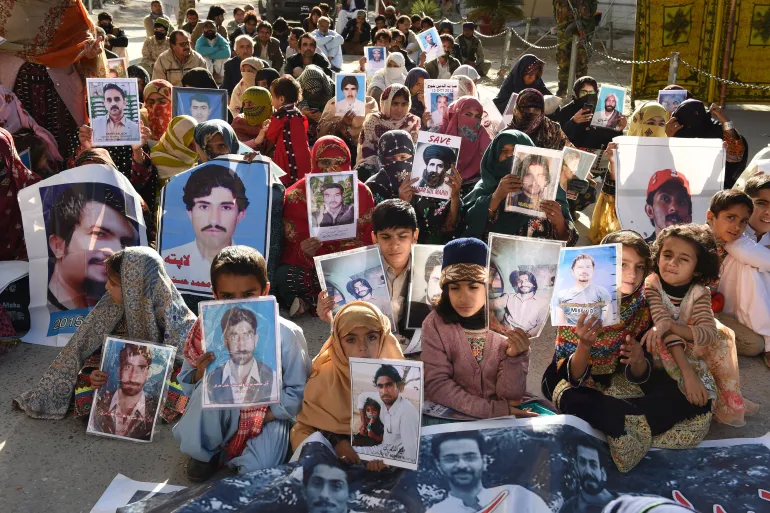The international law defines ‘enforced disappearance’ as the arrest, detention, and abduction of an individual by state agents, political organization or a third party ‘with the authorization, support, or acquiescence of the State, followed by a refusal to acknowledge the deprivation of liberty or by concealment of the fate or whereabouts of the disappeared person, which places such a person outside the protection of the law’. Even though, despite the prohibition of enforced disappearances by international law, the practice of disappearances continues in several South Asian countries. This article presents an overview of the current trends of enforced disappearances in the South Asian region.
However, at the global level, 86 countries have not signed the International Convention for the Protection of All Persons from Enforced Disappearance (ICPPED). The convention prohibits enforced disappearance – while 48 other countries have only signed the Convention. In other words, about two-thirds of the United Nations (UN) member states still have to ratify the Convention. Only five – France, Mexico, Niger, Norway, and Tunisia – out of the 15 current members of UNSC have signed and ratified the Convention.
ICPPED in South Asia:
Alarmingly, in South Asia, Sri Lanka is the only country that has ratified the convention on enforced disappearances in May 2016. India and Nepal signed the convention on enforced disappearances in 2007 but have not yet ratified it. Whereas, Bangladesh, Bhutan, Maldives, Nepal, and Pakistan have not signed the convention.
Around November 2018, Pakistan’s Ministry of Human Rights advised Prime Minister Imran Khan to sign the convention on a priority basis while expressing reservation over Article 26 of the Convention which ‘empowers a United Nations body to conduct raids in countries and make surprise visits to check missing persons. In August 2020, the Maldivian Parliament also approved the decision to sign ICPPED.
Furthermore, in 2018 both Sri Laka and Nepal criminalize enforced disappearances. Similarly, Maldives is expected to do so in the near future. In Pakistan, a draft bill for criminalizing enforced disappearances is undergoing vetting. Subsequently, this leaves behind Bangladesh, Bhutan, and India which still have not shown any intention of criminalizing enforced disappearances.
WGEID Statistics in South Asia:
Due to lack of data, the numbers and scope of enforced disappearances in South Asia are difficult to determine. Government and human rights organizations quote different figures. This ultimately makes it very difficult to objectively assess the true extent of the issue. The UN Working Group on Enforced or Involuntary Disappearances (WGEID) has acknowledged these variations in its country reports covering the South Asian region. Therefore, this article relies on WGEID figures to assess the situation of enforced disappearances in the region. However, it is important to note that WGEID figures only account for cases that are reported to the working group. The WGEID figures cannot be constituted as depicting the real extent of enforced disappearances in any country.
Consequently, according to the WGEID’s latest statistics that are, of May 2020, there are nearly 8,000 outstanding cases of enforced disappearances in South Asian countries. The breakdown of these cases has been presented in the table below.
| Country | Number of outstanding cases of enforced disappearances |
| Sri Lanka | 6,117 |
| Pakistan | 813 |
| Nepal | 479 |
| India (including Indian-held Jammu and Kashmir) | 426 |
| Bangladesh | 70 |
| Maldives | 1 |
| Bhutan | 1 |
Source: 2020 Report of the Working Group on Enforced or Involuntary Disappearances
WGEID Statistics in Sri Lanka:
Statistically, Sri Lanka has the highest number of outstanding cases of enforced disappearances in South Asia. The overwhelming number of these cases are pertaining to the conflict with Tamil Tigers that ended in 2009. The UN WGEID has visited Sri Lanka four times – 1991, 1992, 1999, and 2015. Like Sri Lanka, Nepalese cases of enforced disappearances are largely related to the 10-year civil war that ended in 2006.
WGEID Statistics in India:
In the case of India, the WGEID acknowledges the ‘lack of progress on cases of enforced disappearance in Jammu and Kashmir’. The reports by the International Commission of Jurists also acknowledge the difficulty in assessing the numbers and scope of enforced disappearances across the country. The majority of the enforced disappearance cases in India are largely from the disputed territory of Jammu and Kashmir, Assam, Manipur, Nagaland, and some districts of Arunachal Pradesh. These areas are marred by insurgency, armed conflict, or declared as ‘disturbed’ under the Armed Forces (Special Powers) Act. India has not responded positively to UN WGEID’s request for a visit to the county since August 2010. Likewise, Nepal (May 2006) and Bangladesh (March 2013) have also refused to entertain the Working Group.
Disappearances in Pakistan:
Similarly, in Pakistan, the issue of enforced disappearances has been marred with several controversies. Although, no empirical evidence to point out the benefits of enforced disappearance in dealing with the menace of terrorism, security forces, and intelligence agencies employed this practice in the post 9/11 era against suspected militants. On the other hand, it has often contributed to the marginalization and a sense of alienation among the youth of minority ethnic groups. In recent years, the issue of missing persons is seen as a key factor in pushing several Baloch youths to join ethnonationalist militant groups. Additionally, the mysterious circumstances under which enforced disappearances occur allow militant groups with an incentive to do propaganda against state authorities.
Categories of Missing Persons:
Currently, there are three categories of missing persons in the country which are as follows:
- Enforced Disappearances – The individuals who have been rounded up by security forces or intelligence agencies without ever been presented before a court for trial.
- Missing Persons killed in the conflict – The individuals who have been killed in conflict across both sides of the border.
- Unknown Missing Persons – The individuals about whom there is no data available with any law enforcement agency and they could have possibly joined militants or criminals.
Furthermore, since the assumption of power by the Awami League in 2009, the practice of enforced disappearances has increased significantly in Bangladesh. The majority of the forcibly disappeared individuals have been members and supporters of the political opposition. The Bangladeshi government continues to deny the occurrence of unlawful disappearances.
Lastly, local human rights organizations remain at the forefront of objectively documenting cases of enforced disappearances. They should assist families of forcibly disappeared individuals by reporting their cases with UN WGEID. Governments and lawmakers should remove legal frameworks that provide impunity for enforced disappearances. Moreover, instead of resorting to enforced disappearances for arresting suspected militants, law enforcement and intelligence agencies should utilize the latest surveillance tools and techniques on the principles of legality, proportionality, and the necessity for evidence collection. Working under judicial oversight will empower law enforcement and intelligence agencies to properly prosecute suspected militants. Further, this allows them to avoid propaganda ammunition for militant groups.
Fahad Nabeel is a dynamic professional with expertise in geopolitics, cyber security, and terrorism, serving as Co-Founder and Research Lead of Geopolitical Insights and a Lecturer at the National Defence University. He can be reached on X @





Add a Comment